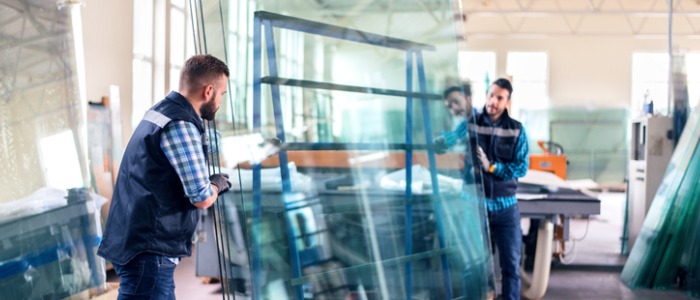Glass testing offers peace of mind that safety glass has been installed in accordance with the Australian building codes in homes and commercial premises. While big windows allow natural light to come into our homes and commercial buildings, they can present an injury risk if the wrong type of glass has been used.
The building code requirements for using safety glass dramatically reduces the risks. There is no one job title responsible for ensuring the correct glass is used, so everyone from an architect to the building inspector and owner needs to understand the requirements and test safety glass.

Types of Safety Glass
Safety glass must meet the Australian Standards AS 1288:2006 Glass in Buildings and AS 2208:1996 Safety Glazing. The size and location of glass windows and doors determine what type of glass should, but safety glass is needed on all glass doors, in bathroom areas, low height glass, panels around doors and stairs.
There are two kinds of safety glass – toughened and laminated glass.
What is Toughened Glass?
Toughened glass is four to five times stronger than ordinary float glass. Also known worldwide as tempered glass, it has been passed through a furnace to heat it to a molten state at around 600 degrees. The glass is then cooled rapidly by compressed air forming a rigid outer layer.
Toughened glass is much more resistant to impact stress and temperature changes. While it can still break, the pieces are small fragments rather than splinters or shards with jagged edges. Toughened glass is available from 3mm thickness. Toughened glass is used on stovetops, cookware and shower screens.
What is Laminated Glass?
A flexible polyvinyl interlayer is placed between two sheets of glass so that when it breaks most of the glass sticks to the vinyl and stays within the frame.
Laminated glass is available in thicknesses starting from 6.38mm. Due to the multiple layers of glass and vinyl interlayer, laminated glass is more expensive than toughened, but it has the added benefits of higher security, UV-resistance and less sound transfer. Laminated glass is used on windscreens and balustrading.
Glass Analysis Kits
The best way to be completely confident of a glass type is to use a Merlin Lazer Glass Analysis Kit.
The kit includes a toughened glass indicator, a glass thickness gauge and low e-coating detector. Everything fits in a sturdy case and includes a battery charger for the toughened glass indicator.
How to Test for Safety Glass
To complete a toughened glass test, hold the gauge indicator flat against the glass at eye level and look at the viewing window from the right slightly.
Normal float glass - lines A & B are blue
Toughened glass – line A is blue & line B is red
In the case of double glazing where the first pane is normal glass and the second pane is toughened will show as lines A, B & C are blue, and line D is red showing it’s the toughened pane.
The Consequences of Not Installing Safety Glass
Installing non-safety glass in the wrong situation can result in someone’s death or severe injury and the person responsible can be made to pay significant costs.
A wide range of people can be blamed for incorrect glass installation in residential or commercial properties - architects, builders, owners, property agents and landlords.
In NSW in 2005 a tenant suffered a lacerated hand and was awarded $840,000 damages when he cut himself on the glass in the front door. The judge decided the owner was 25% responsible for the injury and the property manager 75%.
The property was built before the introduction of safety glass standards, but the glass panel in the front door was only several years old after being replaced following a burglary.
The property agent commissioned a handyman to replace the glass who didn’t use safety glass. If a glazier had been used, it is most likely they would have used safety glass in accordance with the building code as the front door is considered an impact area.
A quick and simple test by the owner or property manager would have alerted them to the fact that the panel wasn’t safety glass and didn’t comply with the building code.
If you have any queries about whether a Merlin Lazer Glass Analysis Kit is suitable for your requirements, call GSR Laser Tools on (08) 9409 4058.